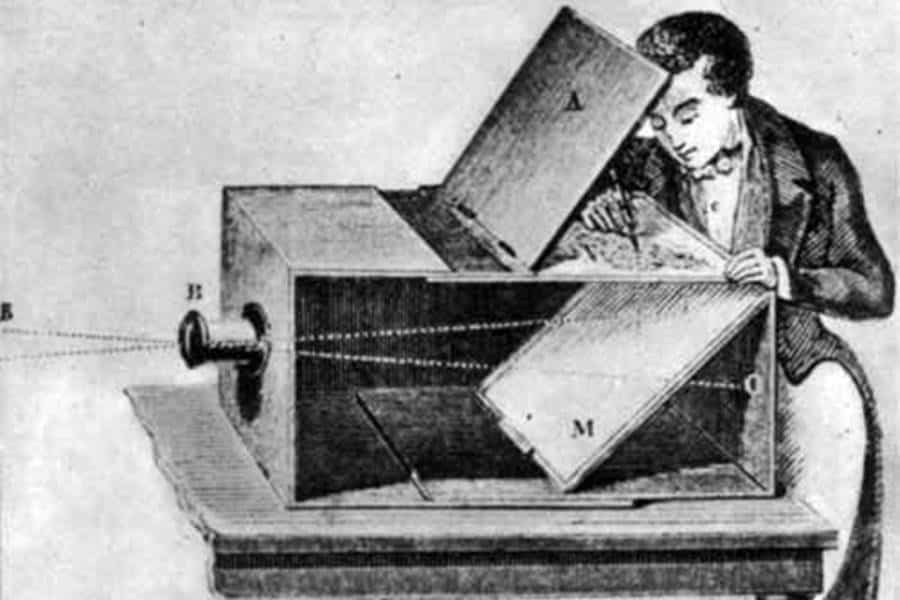When Was The Photography Invented
When Was The Photography Invented - Photography has come a long way since its inception. In the early days, it was a complicated and time-consuming process that required a great deal of skill and expertise to produce images that were accurate and clear. Since then, photography has evolved tremendously, and today, it is one of the most accessible and widely used media formats in the world. In this post, we will take a closer look at the history of photography and explore how it has become an integral part of modern-day society.
The First Camera
Working Towards A Solution
The first camera, also called the camera obscura or dark chamber, was invented in the 16th century by Leonardo da Vinci. However, it was not until the 19th century that photography as we know it today was invented. In 1826, French inventor Joseph Nicéphore Niépce created the first permanent photograph from nature, an image of the view outside his window. This landmark achievement paved the way for other inventors to refine and improve upon the process, leading to the development of the first camera that produced sharp and clear images.

The Invention of Photography
Early Days of Photography
The invention of photography was a game-changer in the art world, allowing artists to capture images that were accurate and precise. The first cameras used a combination of lenses, mirrors, and light to create images on a piece of paper or glass coated with a light-sensitive chemical. The process was complex, and it required a great deal of skill and expertise to produce high-quality images. Despite this, photographers in the 19th century were able to produce stunning images that still captivate viewers today.

The Evolution of Photography
From Black and White to Color
The evolution of photography has been a gradual process. In the early days, photographs were black and white, and the process of creating them was time-consuming and required a great deal of skill. However, in the early 20th century, color photography was introduced, allowing for the creation of images that were more vibrant and lifelike. Today, digital cameras have made it possible for everyone to take high-quality photos with ease. The invention of smartphones with powerful cameras has further democratized photography, making it accessible to almost everyone.
The Impact of Photography
On Art and Society
Photography has had a profound impact on both art and society. In the art world, photographers like Ansel Adams, Henri Cartier-Bresson, and Dorothea Lange have produced iconic images that have defined entire genres of photography. In society, photographs have been used to document historical events, capture the beauty of nature, and tell powerful stories. Today, photographs are used in advertising, journalism, and social media, making them a ubiquitous part of modern-day life.

Tips for Taking Great Photos
Composition and Lighting
Whether you're an amateur or professional photographer, there are certain tips and tricks you can use to take great photos. One of the most important factors to consider is composition. The way you frame your subject can make a huge difference in the final image. Additionally, lighting plays a crucial role in photography. If the lighting is too harsh, your images may appear washed out or overexposed. By paying attention to these two factors, and experimenting with your camera settings, you can create images that are not only technically sound but also aesthetically pleasing.
Practice Makes Perfect
Like any skill, photography takes practice. The more you practice, the better you will become. Take your camera with you wherever you go, and look for interesting subjects to photograph. Try different techniques and experiment with different camera settings. You may not produce perfect images right away, but with time and practice, your skills will improve, and you'll be able to take stunning photographs that will impress your friends and family.
The Future of Photography
The Evolution Continues
The future of photography is exciting. As technology continues to evolve at a rapid pace, new innovations in photography are emerging. From 360-degree cameras to drone photography, the possibilities for capturing images are endless. Additionally, the rise of social media has created a new demand for high-quality photographs that are shareable and visually appealing. As a result, photographers are constantly pushing the boundaries of what is possible, creating new and exciting images that capture the imagination.
/brief-history-of-photography-2688527-FINAL-5bef134d46e0fb0026cda5f9.png)
In Conclusion
In conclusion, photography has come a long way since its inception. From the first camera obscura to modern-day smartphones, the evolution of photography has been remarkable. Photographers have captured some of the most iconic moments in history, and their images continue to inspire and captivate viewers today. As technology advances, the possibilities of what can be achieved with photography are endless, and we can't wait to see what the future holds.
View more articles about When Was The Photography Invented
Post a Comment for "When Was The Photography Invented"